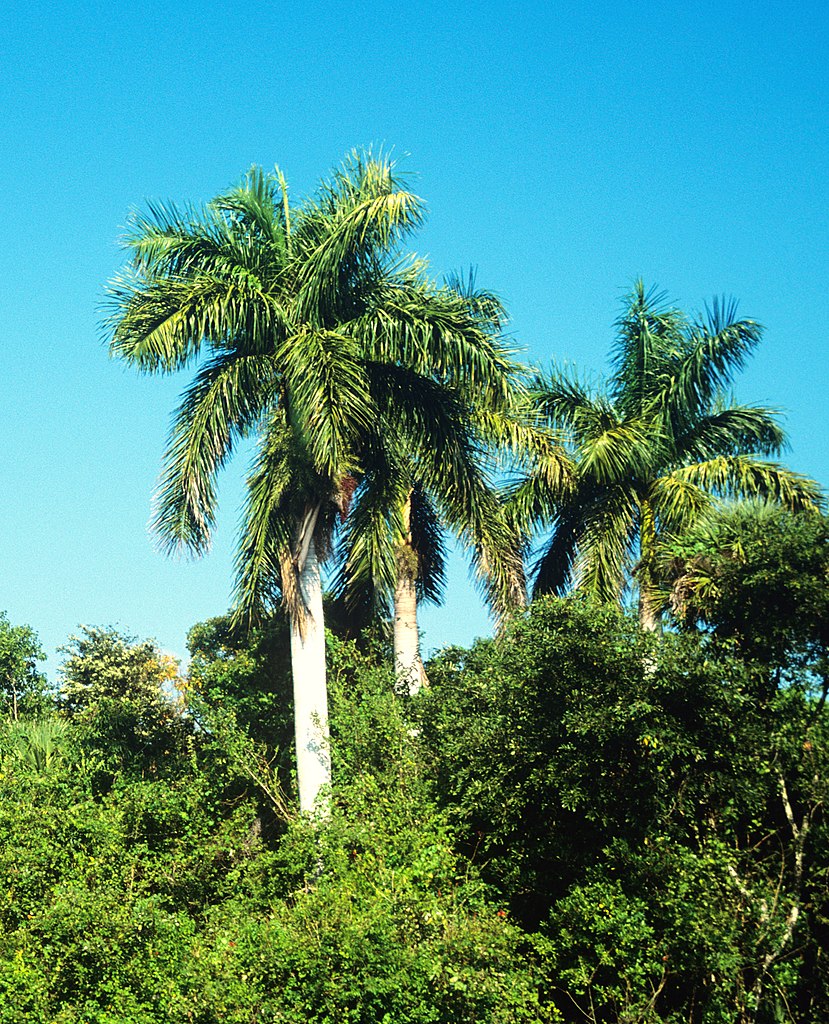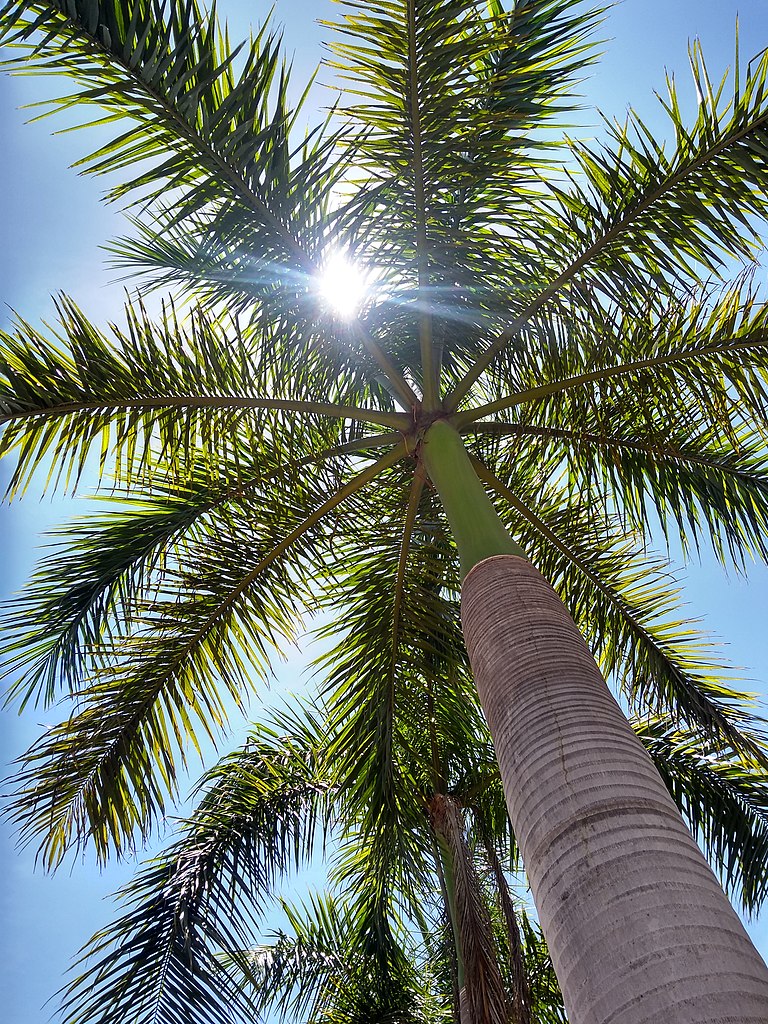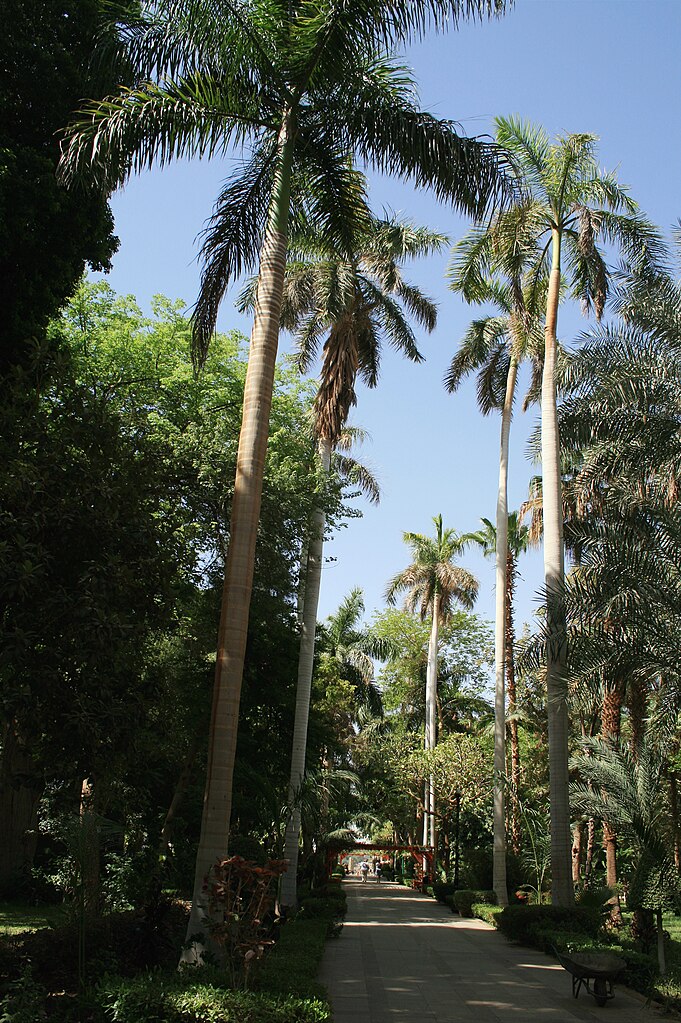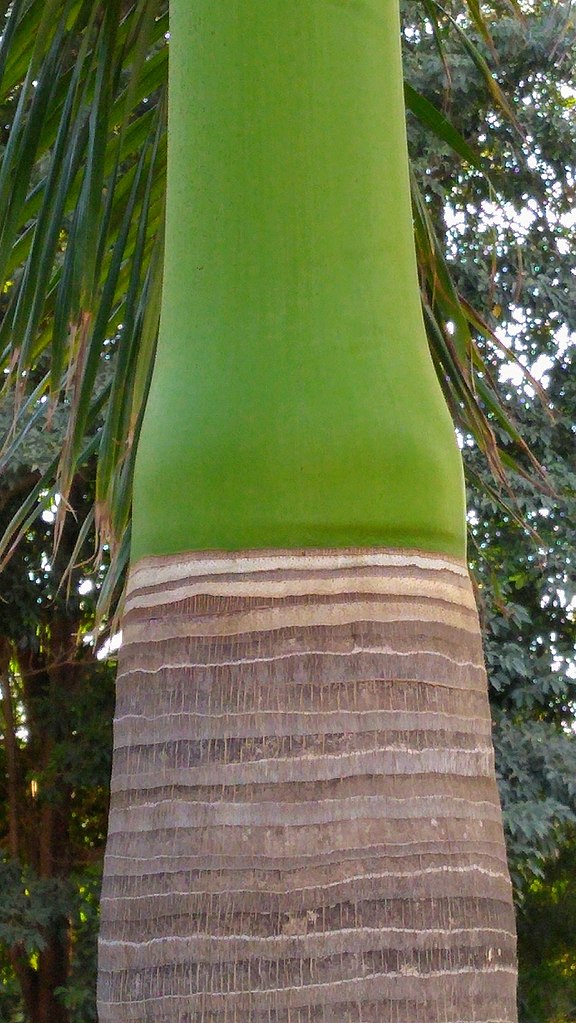Roystonea regia, commonly known as the Cuban royal palm or Florida royal palm, is a species of palm native to Mexico, the Caribbean, Florida, and parts of Central America. A large and attractive palm, it has been planted throughout the tropics and subtropics as an ornamental tree. Although it is sometimes called R. elata, the conserved name R. regia is now the correct name for the species. The royal palm reaches heights from 50 to over 80 feet tall. Populations in Cuba and Florida were long seen as separate species, but are now considered a single species.
Widely planted as an ornamental, R. regia is also used for thatch, construction timber, and in some forms of so-called traditional medicine, although there is currently no valid scientific evidence to support the efficacy or use of any palm species for medicinal purposes. The fruit is eaten by birds and bats (which disperse the seeds) and fed to livestock. Its flowers are visited by birds and bats, and it serves as a roosting site and food source for a variety of animals. Roystonea regia is the national tree of Cuba, and has a religious role both in Santería and Christianity, where it is used in Palm Sunday observances.
Common names
In cultivation, Roystonea regia is called the Cuban royal palm or simply the royal palm. In Cuba, the tree is called the palma real or palma criolla. In India, where it is widely cultivated, it is called vakka. In Cambodia, where it is planted as decorative along avenues and in public parks, it is known as sla barang’ (“Western palm”).




Source: Wekipedia
169 Vitogo Prade Lautoka, Fiji
Mon – Thu: 8:00 am – 4:30 pm
Fri: 8:00 am – 4:00 pm
Useful Links
City Map View
Lautoka City Council © 2025. All Rights Reserved

